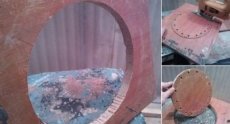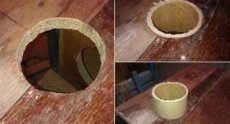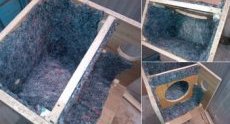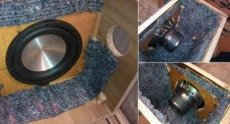Sabwuffer Gangs
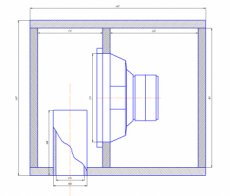 I want to say it's not the first saboopher on this dynamic. The BP (Bandpass, Bandpass) of Order 4 was a closed box and FP (fasoiner). Running forward, I'll say that the BP of Order 4 on this dynamic, with a slightly larger dimension, sounds much better than the one in the FA (closed box) or the FP, despite the "not fitting" dynamics. Speaking of the parameters, they were measured by me, and for the particular dynamics, they were so important:
I want to say it's not the first saboopher on this dynamic. The BP (Bandpass, Bandpass) of Order 4 was a closed box and FP (fasoiner). Running forward, I'll say that the BP of Order 4 on this dynamic, with a slightly larger dimension, sounds much better than the one in the FA (closed box) or the FP, despite the "not fitting" dynamics. Speaking of the parameters, they were measured by me, and for the particular dynamics, they were so important:
Qts = 0.84
Vas = 34 l
Fs = 34 Hz
Re = 3.6 Ohm
Le = 1, 32 H
Xmax = 7.5 mm
Z = 4 Ohm
Qms = 8.27
Qes = 0.93
SPL = 87 db
Pe = 150 W
BL = 7.6
Dia = 0.17 m
Sd = 242 m^2
 As can be seen from the parameters, the dynamics are not entirely suitable for BP, but even for FP. It's not really that sad. By putting the parameters in the sabvuffer hull calculation program (I used WinISD), I was selected for the optimal configuration of the acoustic discharge for this dynamic. When calculated, I tried to obtain the flatest AC, with the minimum dimensions of the shell, and the acceptable frequency range. I've managed all this.
As can be seen from the parameters, the dynamics are not entirely suitable for BP, but even for FP. It's not really that sad. By putting the parameters in the sabvuffer hull calculation program (I used WinISD), I was selected for the optimal configuration of the acoustic discharge for this dynamic. When calculated, I tried to obtain the flatest AC, with the minimum dimensions of the shell, and the acceptable frequency range. I've managed all this.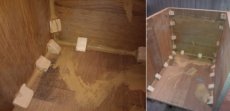 Calculated AFX of the receipt
Calculated AFX of the receipt
Frequency range -3dB . 30 - 90 Hz.
More than enough for good music, given that the lower note on the bass has a frequency of 31, 5 Hz.
After receiving the desired calculations, I started designing the shell and got this drawing:
Shell range - 407 x 460 x 407 mm
Front cell volume - 22, 7 litres ( ~20 litres less dynamic and FI tubes)
Shank volume - 30, 6 litres ( ~ 26 litres less dynamics)
FP - 53 Hz
After all the calculations and the design of the hull, I started building the drawer.
The first thing I've done was cooking for all the shell panels.
As a body material, I used the CPD 21 mm from the former furniture used.
The assembly begins with the attachment of the future front and rear walls, and then the side wall on which the terminal will be located with the inlet terminals.
